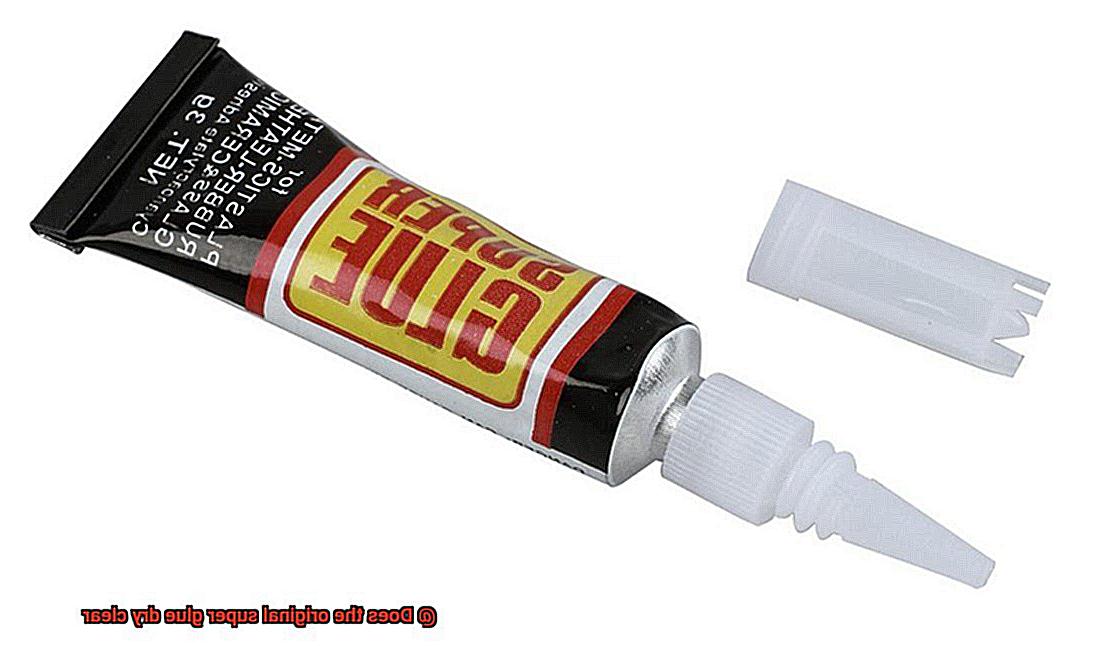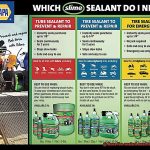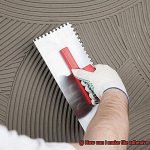Picture this: you’re in a bind, desperately searching for a quick fix to mend that broken heirloom or repair your favorite pair of shoes. Enter super glue, the legendary adhesive that promises to work wonders. But amidst its claims of miraculous bonding powers, one question lingers: does the original super glue actually dry clear?
Prepare to embark on a fascinating journey into the world of adhesive enchantment as we unravel the truth. Known scientifically as cyanoacrylate adhesive, super glue has revolutionized DIY repairs, art projects, and even medical procedures. Its ability to stick almost anything together is nothing short of extraordinary. But what about transparency?
In this exploration, we’ll delve deep into the science behind this magical adhesive and uncover the chemical reactions that occur during its drying process. Did you know that super glue needs only a minuscule amount of moisture to set and create an unbreakable bond? We’ll unveil the mysteries surrounding its invisibility and examine how it interacts with different surfaces, ensuring seamless fixes in our everyday lives.
Get ready for a microscopic-level investigation of dried super glue as we zoom in on its chameleon-like qualities. Discover why this adhesive is a true master at blending in with its surroundings, leaving behind an almost invisible finish. Prepare to be amazed as we uncover the secret behind the original super glue’s invisible powers.
So whether you’re a DIY enthusiast seeking reliable adhesion, an artist craving the perfect medium for your creations, or simply fascinated by the science of transparency, join us on this captivating journey. Buckle up and put on your safety goggles because things are about to get sticky, exciting, and crystal clear.
What is Original Super Glue?
Contents
- 1 What is Original Super Glue?
- 2 Does Original Super Glue Dry Clear?
- 3 Factors That Affect the Clarity of Dried Super Glue
- 4 How to Apply Super Glue for a Clear Finish
- 5 Compatible Materials for Original Super Glue
- 6 Advantages of Using Original Super Glue
- 7 Disadvantages of Using Original Super Glue
- 8 Alternatives to Original Super Glue
- 9 Conclusion
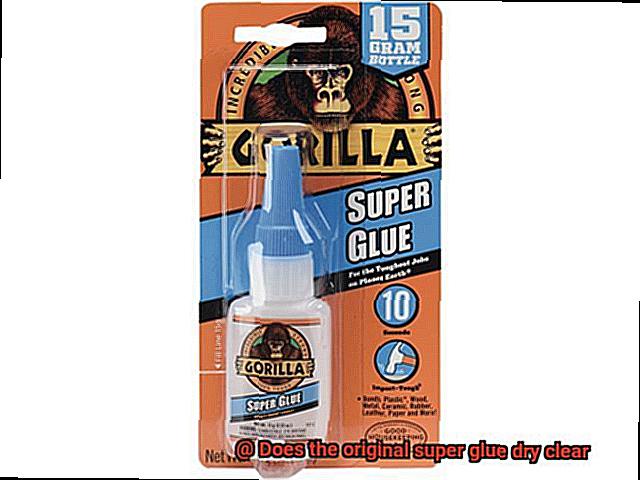
Original Super Glue is an incredibly powerful adhesive that is renowned for its unmatched bond strength and rapid drying time. This remarkable product was initially developed by Dr. Harry Coover Jr. in the 1940s, while he was conducting experiments to create transparent plastic gun sights for World War II. During his research, Dr. Coover accidentally stumbled upon a formula that possessed the extraordinary ability to stick to anything it came into contact with, leading to the accidental discovery of Super Glue.
The original Super Glue is composed of a cyanoacrylate-based formula, which is a type of acrylic resin. This unique composition enables it to be used for a wide range of applications, from repairing broken items to engaging in creative DIY projects. When applied correctly, it forms an exceptionally strong and durable bond that can withstand even the harshest environmental conditions.
One of the most notable features of original Super Glue is its transparent appearance when dry. This characteristic makes it particularly well-suited for use on surfaces where aesthetics are crucial, including glass, ceramics, and delicate jewelry.
In addition to its clear drying properties, original Super Glue possesses an astonishingly fast drying time. Within mere seconds of application, it begins to set, and within 24 hours, it fully cures. This rapid-drying attribute ensures efficient bonding and eliminates the need for prolonged clamping or holding of materials together.
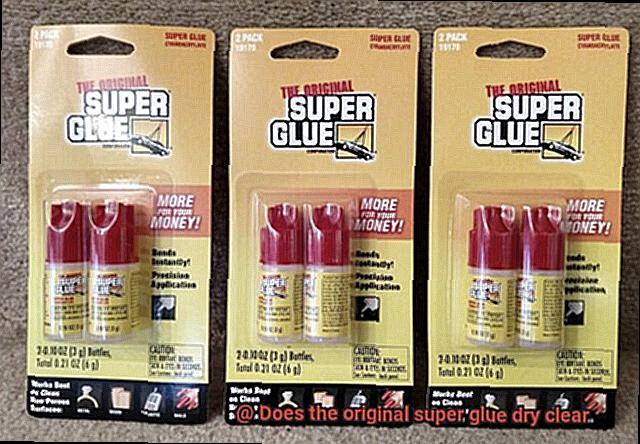
Furthermore, original Super Glue exhibits exceptional resistance to moisture, making it equally suitable for interior and exterior use without compromising its bond strength.
However, it is important to note that while the glue itself dries transparently, it may leave behind a slight residue on certain surfaces. Nevertheless, this residue can usually be effortlessly removed using acetone or rubbing alcohol.
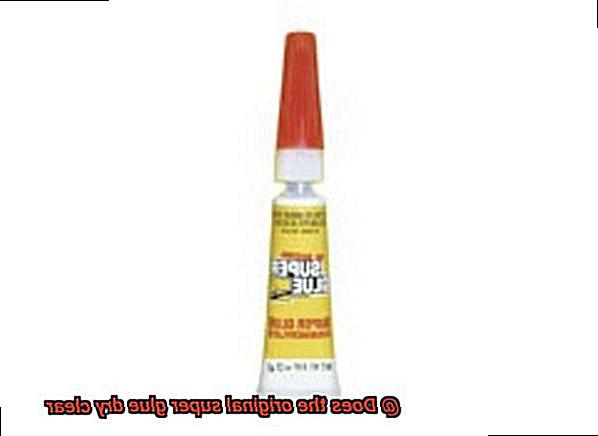
Does Original Super Glue Dry Clear?
There are a few factors that can affect the clarity of the dried glue. Let’s take a closer look at all the details.
First and foremost, the amount and application of the glue play a significant role in how clear it dries. It’s best to apply a thin layer of glue across the surfaces you want to bond. This ensures that the adhesive spreads evenly, eliminating any excess that could create a cloudy or opaque appearance. So remember, less is more.
Next, let’s talk about the type of surface you’re working with. Super Glue can sometimes leave behind a slight residue or film, especially on porous materials like wood or fabric. But don’t fret. A quick wipe with rubbing alcohol or acetone will easily remove it, leaving you with a clean and clear bond.
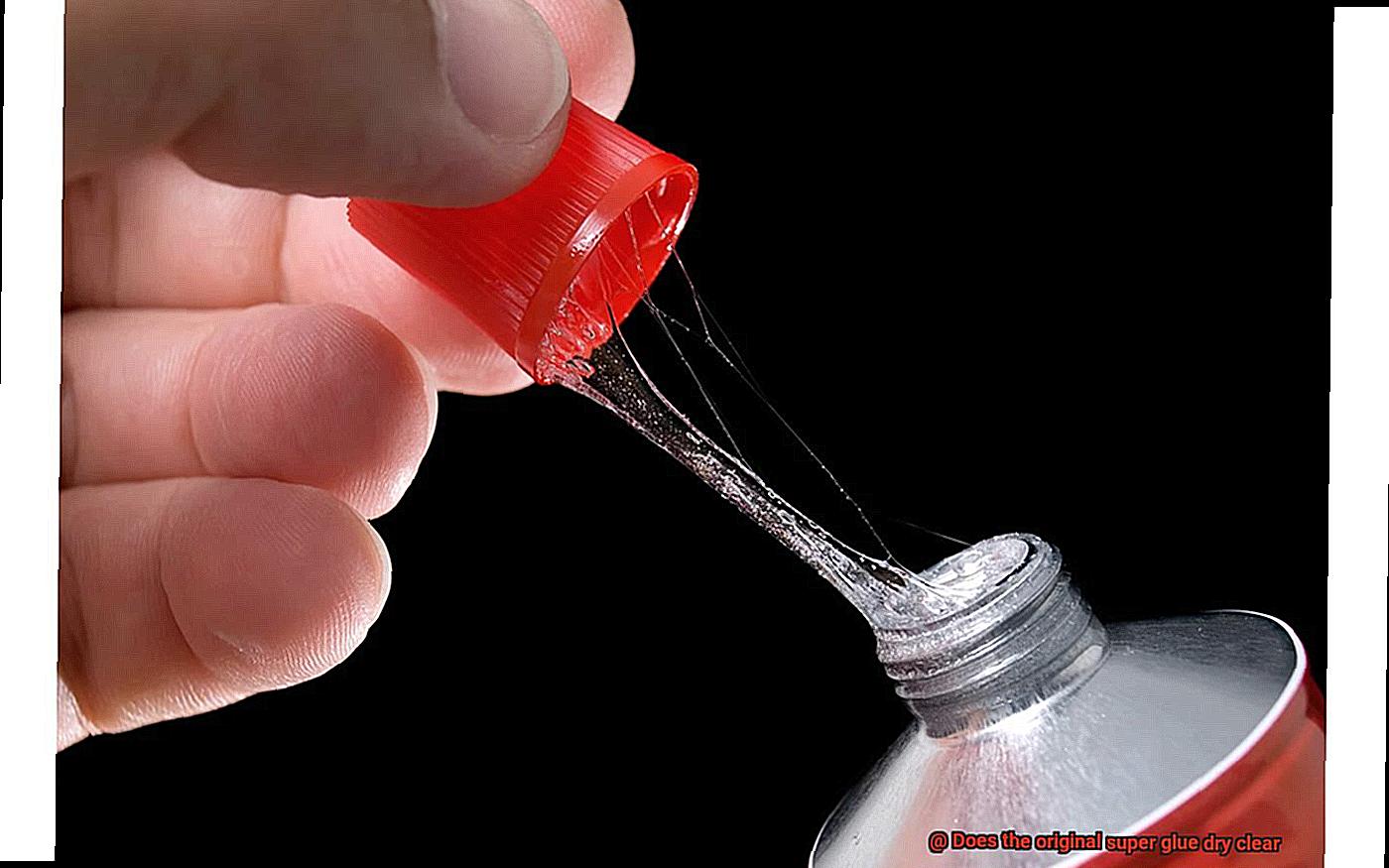
Preparation is key as well. Make sure your surfaces are clean, dry, and free from any grease or dirt. By wiping away loose particles or debris, you’ll set yourself up for a strong and transparent bond.
Now, if you happen to apply too much glue or the surfaces aren’t properly aligned during bonding, excess glue may squeeze out from the edges. This can result in a visible bead or line of dried glue that may not be completely clear. But don’t panic. Simply grab a tissue or cloth and wipe away any excess glue immediately before it hardens.
Lastly, let’s talk about moisture and humidity. While Super Glue cures by reacting with moisture in the air, excessive moisture or humidity can cause it to cure too quickly, potentially resulting in a slightly cloudy appearance. To achieve the best results, work in a well-ventilated area with controlled humidity levels.
Factors That Affect the Clarity of Dried Super Glue
- Application Technique: The way super glue is applied can have a significant impact on its clarity when dried. It is essential to apply the glue in a thin and even layer to ensure optimal clarity. If too much glue is applied, it can result in a cloudy or opaque appearance when dried.
- Porous Surfaces: The type of surface on which super glue is applied can also affect its clarity. Super glue tends to adhere well to non-porous surfaces such as glass or metal, resulting in a clear and transparent bond. However, when applied to porous materials like wood or fabric, the glue may seep into the tiny pores, causing a less clear and more hazy appearance.
- Temperature and Humidity: The environmental conditions during the drying process can impact the clarity of super glue. High temperatures and low humidity levels tend to accelerate the drying process, allowing the glue to dry more quickly and often resulting in a clearer finish. On the other hand, cooler temperatures and higher humidity can slow down the drying process, potentially leading to a cloudier or less transparent bond.
- Quality of the Glue: The quality of the super glue itself can play a role in determining its clarity when dried. Cheap or low-quality glues may contain impurities that can affect the transparency of the dried glue. It is advisable to choose a reputable brand and ensure that the glue is fresh and within its expiration date for optimal results.
- Curing Time: Super glue requires time to fully cure and achieve maximum clarity. While it may dry to the touch relatively quickly, it is recommended to allow sufficient curing time for optimal clarity. Rushing the drying process by applying pressure or using excessive heat can result in a less clear bond.
- Cleaning Agents: If cleaning agents or solvents are used on the glued surface after application, it can potentially affect the clarity of the dried super glue. Certain chemicals may react with the glue and cause it to become cloudy or discolored. It is important to read and follow the manufacturer’s instructions for cleaning or removing super glue from surfaces to ensure the best possible clarity.
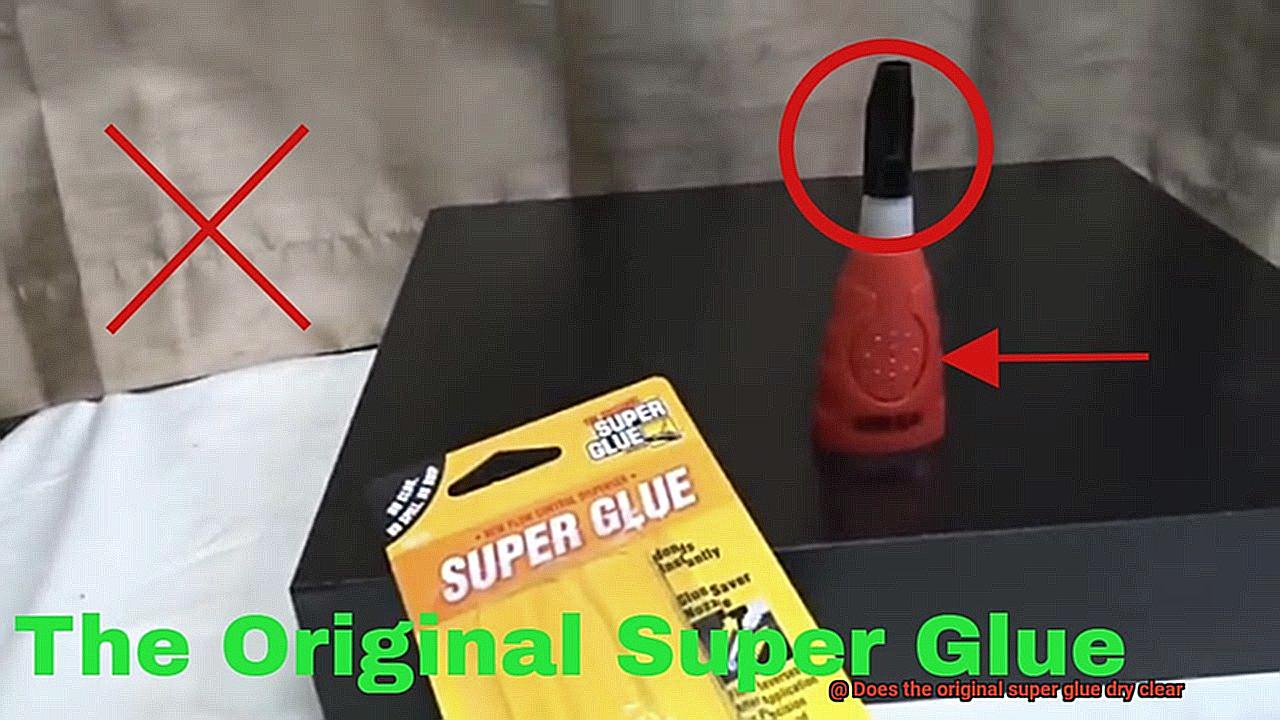
How to Apply Super Glue for a Clear Finish
The key to achieving a clear finish with super glue lies in proper surface preparation. Start by meticulously cleaning the surfaces with a mild detergent and water to remove any dirt, grease, or oils that may interfere with the bonding process.
Remember, cleanliness is paramount for a strong and transparent bond. Once clean, ensure that the surfaces are completely dry to prevent any moisture from affecting the adhesive properties of the super glue. Smooth out any rough edges or debris by gently sanding or filing them, ensuring a flawless bond.
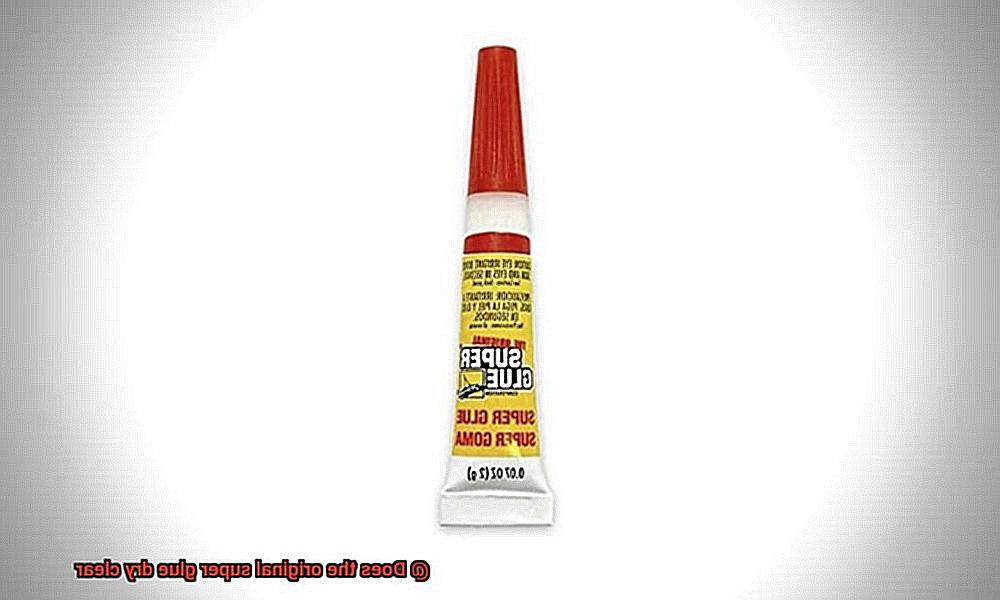
Test the Glue
Before proceeding with the actual bonding process, it is crucial to test the super glue on a small inconspicuous area of one of the surfaces. This preliminary step helps ensure that the glue dries clear without leaving any residue or discoloration behind. By conducting this test, you can confidently proceed knowing that your desired clear finish is within reach.
Apply the Glue
When applying super glue for a clear finish, less is more. Use a small amount of glue, approximately one drop per square inch of surface area, to create a thin layer. Applying excessive amounts of glue not only leads to a messy appearance but also prolongs drying time, potentially compromising clarity. Once applied, quickly and precisely press the surfaces together, ensuring proper alignment before firmly securing them.
Allow the Bond to Set
After pressing the surfaces together, hold them in place for a few seconds to allow the super glue to set. This crucial step ensures that the bond forms securely and minimizes any potential disruptions that may affect clarity. Exercise caution during this time, avoiding any unnecessary movements or disturbances.
Remove Excess Glue
Promptly wipe away any excess glue that may have squeezed out from the bond using a clean cloth or paper towel. Taking immediate action prevents the formation of residue that could interfere with achieving a clear finish. Remember, attention to detail in this step is essential for a flawless result.
Cure Time
Patience is key when it comes to achieving the ultimate clarity and strength with super glue. Allow the bonded surfaces ample time to fully cure before handling or subjecting them to any stress or strain. While specific curing times may vary depending on the type of super glue used, it is generally advisable to follow the manufacturer’s instructions and allow at least 24 hours for maximum bond strength and clarity.
Always prioritize safety when working with super glue. Wear gloves and goggles to protect your skin and eyes, respectively. Additionally, work in a well-ventilated area to minimize exposure to fumes.
Compatible Materials for Original Super Glue
Super glue, known for its strong bonding properties and quick-drying capabilities, is compatible with a wide range of materials. When it comes to clarity, the original super glue typically dries transparent or translucent, making it ideal for applications where appearance is important. Here are some compatible materials and their effects on the clarity of the dried adhesive:
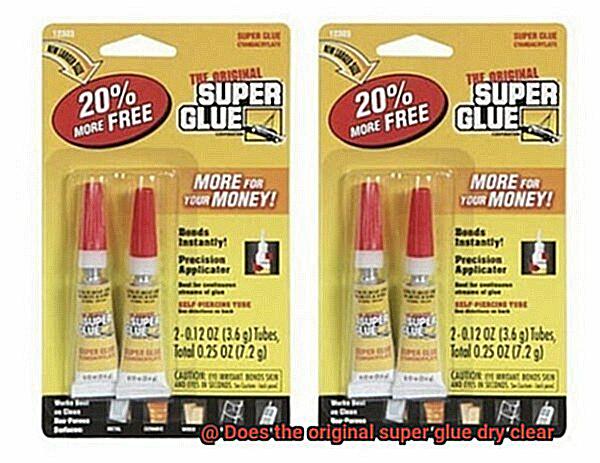
- Plastics: Super glue works well on most plastics such as acrylic, polycarbonate, and PVC. However, certain plastics like polyethylene and polypropylene may result in a cloudy appearance. To ensure optimal clarity, it is recommended to test a small area first or use a specialized plastic bonding formula.
- Glass: Super glue bonds glass surfaces effectively and dries clear, making it perfect for repairing glass objects or bonding clear glass parts without leaving any noticeable residue.
- Metals: The original super glue can bond various metals like aluminum, stainless steel, and copper. It provides a strong bond and dries clear without leaving any visible residue.
- Ceramics: Super glue adheres effectively to ceramics and dries clear. Whether you need to repair a broken ceramic mug or fix a decorative ceramic piece, the original super glue can provide a durable and nearly invisible bond.
- Rubber: While super glue can bond rubber, it is essential to choose a specialized formula designed specifically for rubber bonding. This type of glue ensures a strong, clear bond that won’t weaken or degrade over time.
It’s important to note that the original super glue may not be suitable for all materials. Fabrics, porous surfaces, or materials exposed to constant moisture or extreme temperatures may require alternative adhesives specifically formulated for those conditions.
Advantages of Using Original Super Glue

Original Super Glue offers a multitude of advantages that make it the adhesive of choice for various applications. From its clear drying properties to its versatility and quick setting time, this powerful adhesive delivers exceptional results.
First and foremost, one of the standout advantages of Original Super Glue is its ability to dry clear. Unlike other adhesives that leave behind unsightly marks or residue, this glue dries transparent, ensuring a seamless and professional finish. Whether you’re working on delicate arts and crafts projects or repairing glassware, the clear drying feature guarantees an invisible bond.
In addition to its clear drying properties, Original Super Glue is also incredibly versatile. It can bond a wide range of materials, including plastic, metal, wood, ceramics, and rubber. Whether you’re tackling household repairs or engaging in DIY projects, this adhesive is your go-to solution.
Furthermore, Original Super Glue boasts a quick setting time. Within seconds to minutes, the glue dries completely, saving you valuable time and effort. No longer will you need to wait for hours or days for your project to be ready – with Original Super Glue, you can get back to enjoying your handiwork almost instantly.
Another advantage of Original Super Glue is its unparalleled strength. Once dried, this adhesive creates a strong bond that ensures your glued items remain securely in place. Whether you’re working on lightweight crafts or heavy-duty applications, this glue can withstand various stresses and strains.
Unlike some other adhesives that require clamping or additional support during the drying process, Original Super Glue often does not need any extra assistance once applied. This convenience makes it easy to use, especially for small-scale projects or quick fixes.
Original Super Glue is also resistant to moisture and temperature changes. Regardless of whether you’re using it indoors or outdoors, this adhesive maintains its strength and durability even in humid or extreme conditions.
Additionally, Original Super Glue has a long shelf life if stored correctly. You can keep it for extended periods without worrying about it losing its effectiveness or drying out. This reliability ensures that you’ll always have a dependable adhesive on hand.
Lastly, Original Super Glue often comes in small, portable packaging. This makes it convenient to carry and use on the go, making it perfect for emergency repairs or when working in tight spaces.
Disadvantages of Using Original Super Glue
Just like any superhero, even the original super glue has its weaknesses. It’s important to be aware of the potential drawbacks before relying on this adhesive. Here are some disadvantages to consider:
- Difficult to Remove: The strong adhesive properties of original super glue can be a disadvantage if it accidentally gets on surfaces other than what it was intended for. Removing super glue from skin, fabric, or delicate materials can be a painstaking and potentially damaging process.
- Unsuitable for Porous Materials: Original super glue may not adhere well to porous materials like wood or fabric. It can create a messy appearance or fail to bond effectively, making it less suitable for certain applications.
- Short Shelf Life: Once opened, original super glue has a relatively short shelf life. It tends to dry out quickly, reducing its effectiveness over time. This means that if you don’t use it before it expires, you’ll end up wasting the product.
- Strong Fumes: During the curing process, original super glue emits pungent fumes that can be irritating to the eyes, nose, and throat. To minimize exposure, it’s important to use it in a well-ventilated area or wear protective gear.
- Fast-Drying Nature: While the fast-drying nature of original super glue is often advantageous, it can also be a disadvantage in certain situations. If you need to reposition or adjust glued parts after application, it becomes extremely challenging as the glue sets almost instantly.
- Not Waterproof: Original super glue is not waterproof or water-resistant. If the glued item comes into contact with water or moisture, the bond may weaken or break entirely, compromising its durability.
- Ineffectiveness on Certain Plastics: The original super glue may not work effectively on certain plastics with low surface energy, such as polyethylene or polypropylene. For proper bonding in these cases, specialized adhesives may be needed.
- Brittle when Cured: Once cured, original super glue can become brittle, making it susceptible to cracking or breaking under stress or movement. This fragility can be a major disadvantage in applications where flexibility is required.
- Challenging Application: The thin consistency of original super glue can make it difficult to apply precisely. This can lead to messy application and potential wastage of the product.
- Limited Flexibility: Original super glue has limited flexibility once cured, which can be a disadvantage in applications where flexibility is required, such as on flexible materials or joints that experience movement.

Alternatives to Original Super Glue
There are numerous options available that offer different features and benefits to suit your specific needs. Here are some top alternatives to consider:
- Epoxy Adhesive: Known for its strong bond and versatility, epoxy adhesives come in different formulations, including clear varieties that dry transparently. They’re perfect for bonding metal, glass, ceramic, and plastic.
- Gel Super Glue: This variant of cyanoacrylate adhesive has a thicker consistency than the original, providing better control and preventing messy drips. It dries clear and bonds quickly, making it ideal for applications where appearance matters.
- Wood Glue and Metal Epoxy: Specifically formulated for wood and metal bonding, these adhesives ensure a strong and durable bond.
- Fabric Glue: Designed for fabrics, this adhesive is great for hemming clothes, repairing tears, or creating fabric crafts. It’s usually clear when dry and has flexible properties to withstand fabric movements.
- Silicone Adhesive: A versatile alternative suitable for various applications, silicone adhesive offers a strong bond and excellent resistance to heat and moisture. Clear formulations are available for projects where appearance is important.
- Hot Glue Gun: Widely used in crafts and DIY projects, hot glue guns melt glue sticks that can be applied to various surfaces like paper, plastic, fabric, and even certain metals. Hot glue dries clear and provides a strong bond.
Conclusion
The original super glue indeed dries clear, making it an ideal choice for various applications.
Whether you’re fixing a broken vase or crafting intricate jewelry, the clear drying nature of the original super glue ensures that your work remains visually appealing.

